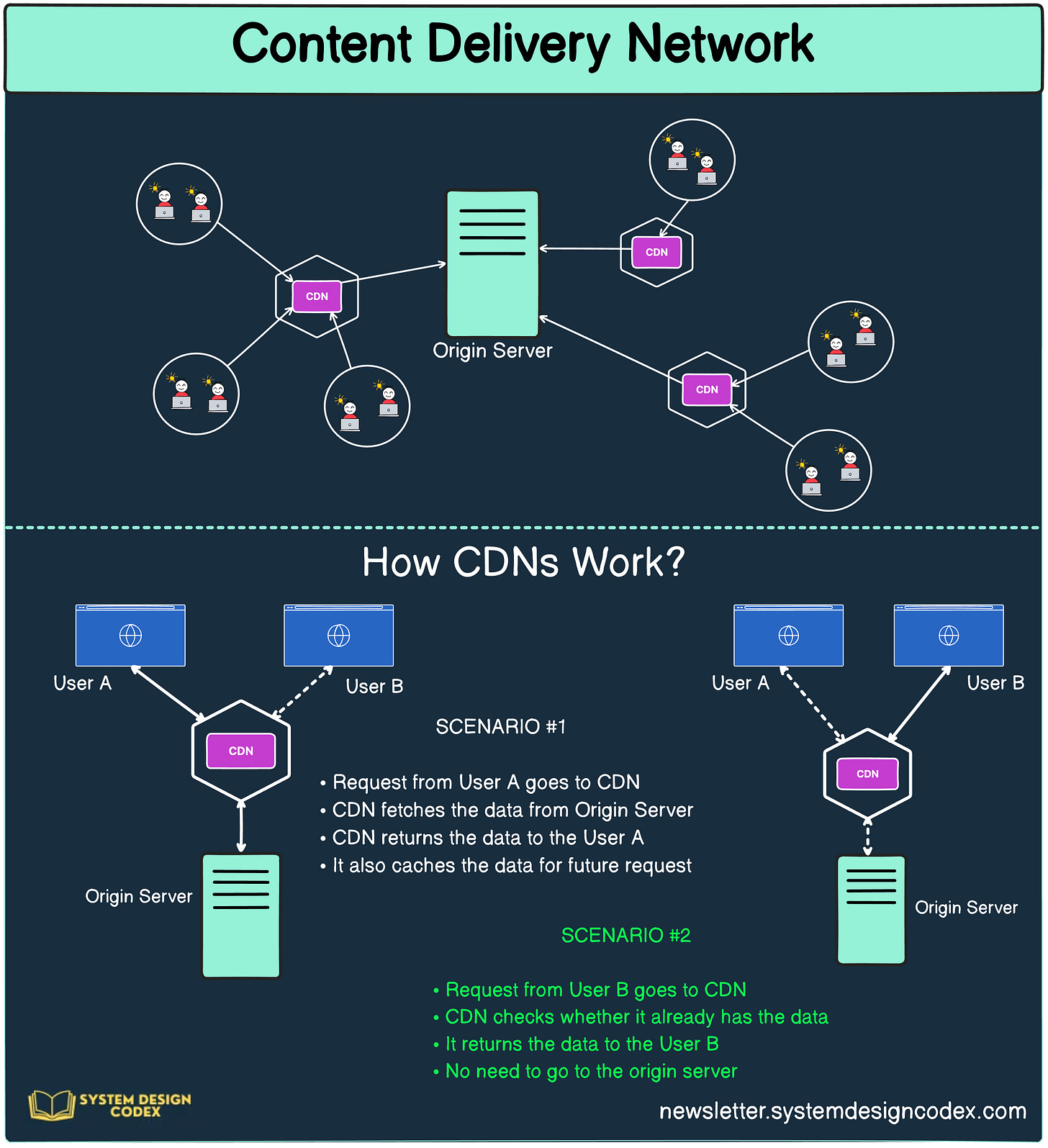5 Strategies for Read-Heavy Systems
Build a high-performance system
There’s a higher probability of you working on a read-heavy system.
Why?
Because read-heavy systems are far more common than write-heavy systems. Even as a user, you see them all the time.
Customers view dozens of products on websites like Amazon before actually buying one and triggering the write requests.
Most users scroll through hundreds of social media posts every day and post only one or two. Some don’t post at all.
In this post, I’ll discuss 5 strategies to build high-performance read-heavy systems:
1 - Perform Database Indexing
Indexing your database tables is the absolute must-do activity for optimizing reads.
With proper indexes that are tailored to the common query patterns of your application, your queries will be a lot more efficient and fast.
Moreover, indexing can reduce the need for other strategies for a long time.
2 - Database Replication with Read Replicas
Database replication is a technique in which you replicate data from the main database to other secondary databases.
These replicas are copies of the primary database that can handle read requests.
With more replicas, you can distribute read requests to improve the performance of the reads. It also increases the durability of the data.
However, you need to deal with scenarios related to replication lag and eventual consistency in the replicas.
3 - Caching
Caching is a great choice for read-heavy systems where the data doesn’t change much after it’s created.
With a good caching strategy, you can significantly reduce the load on your database.
4 - Content Delivery Networks
While caching is good, you can also take it to the next level by investing in a Content Delivery Network or CDN.
With a CDN, you can cache and serve static content closer to the end users and reduce read latency. You can also support the geographic distribution of data with a CDN.
5 - Load Balancing
While it’s possible to spin up multiple replicas, cache instances, or servers to handle the reads, you also need to ensure fair distribution of traffic to these instances.
Using a load balancer is the key to implementing an efficient distribution of workload.
Plus, it also increases the availability of your system with health checks that ensure that traffic is routed only to healthy instances.
So - which other strategies do you think can help with read-heavy systems?
Eraser Professional Plan Free Trial (Affiliate)
As you all know, I use the Eraser for drawing all the diagrams in this newsletter.
Eraser is a fantastic tool that you can use as an all-in-one markdown editor, collaborative canvas, and diagram-as-code builder.
And now you can get one month free on their Professional Plan or a $12 discount if you go for the annual plan. The Professional Plan contains some amazing features like unlimited AI diagrams, unlimited files, PDF exports, and many more.
Click the below button to head over to Eraser and at the time of checkout, use the promo code “CODEX” to get this offer now.
Shoutout
Here are some interesting articles I read this week:
4 essential steps to take before making any technical decision by Petar Ivanov
Practical learning strategies for engineers by Nicola Ballotta
That’s it for today! ☀️
Enjoyed this issue of the newsletter?
Share with your friends and colleagues.
See you later with another value-packed edition — Saurabh.







I completely missed this one! Great strategies, as always, I love your diagrams. What do you use to create them?
Thanks for the shoutout!
Thanks for the shoutout, Saurabh!!!